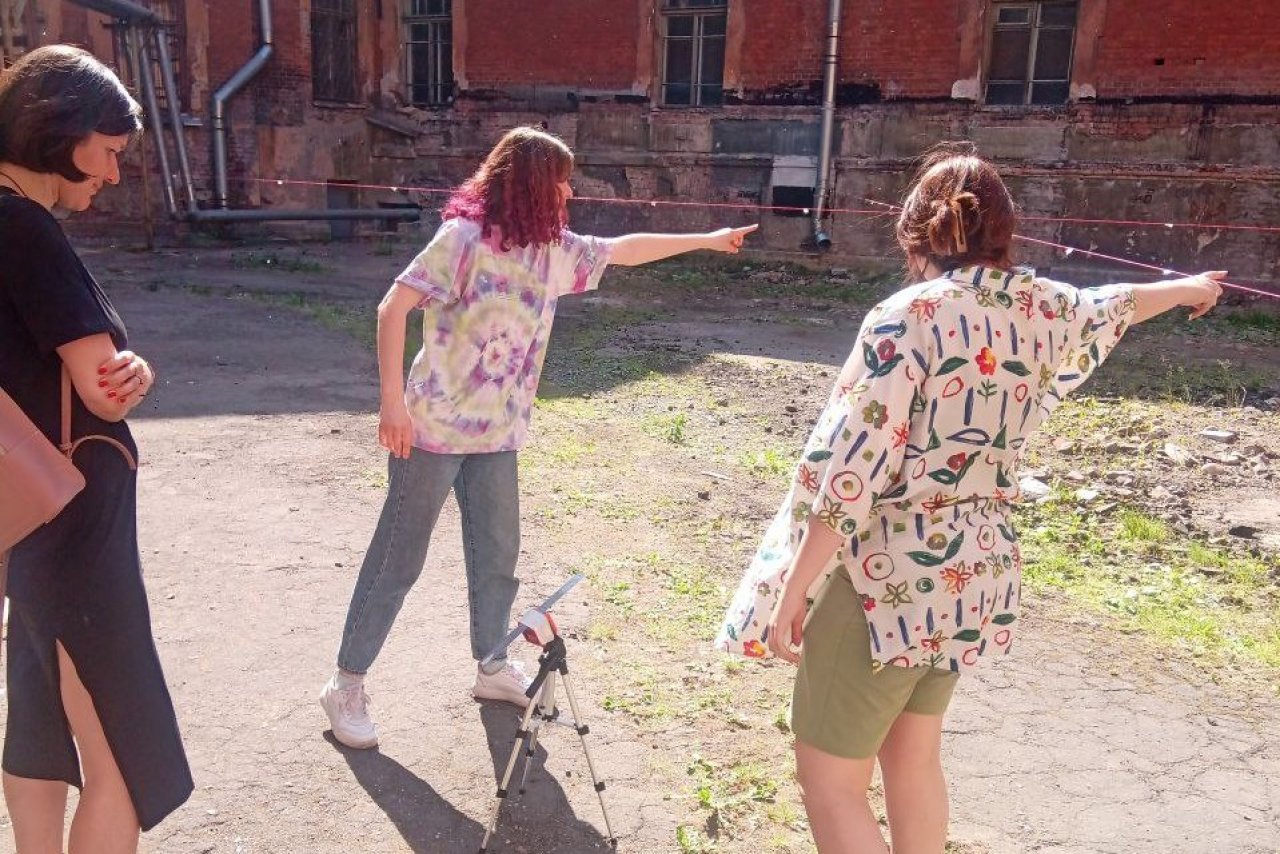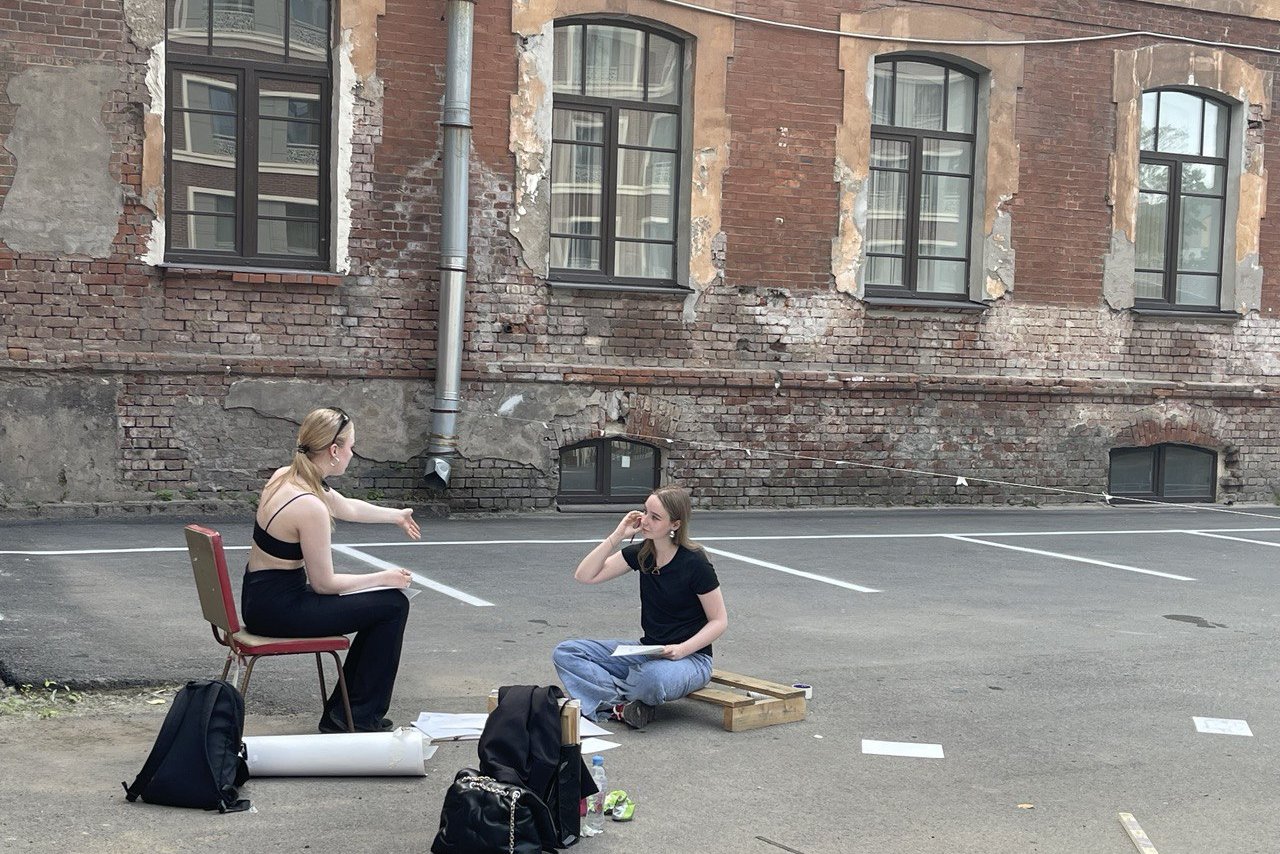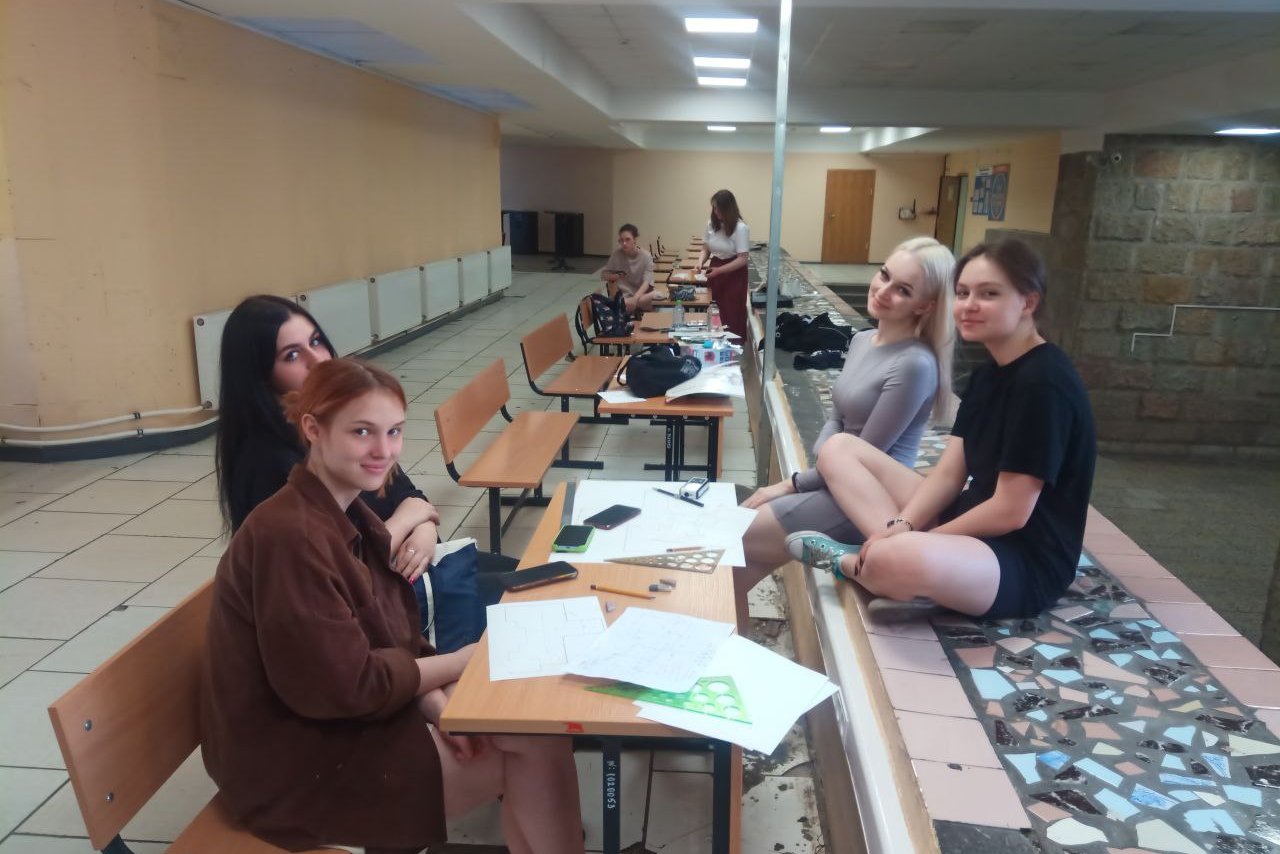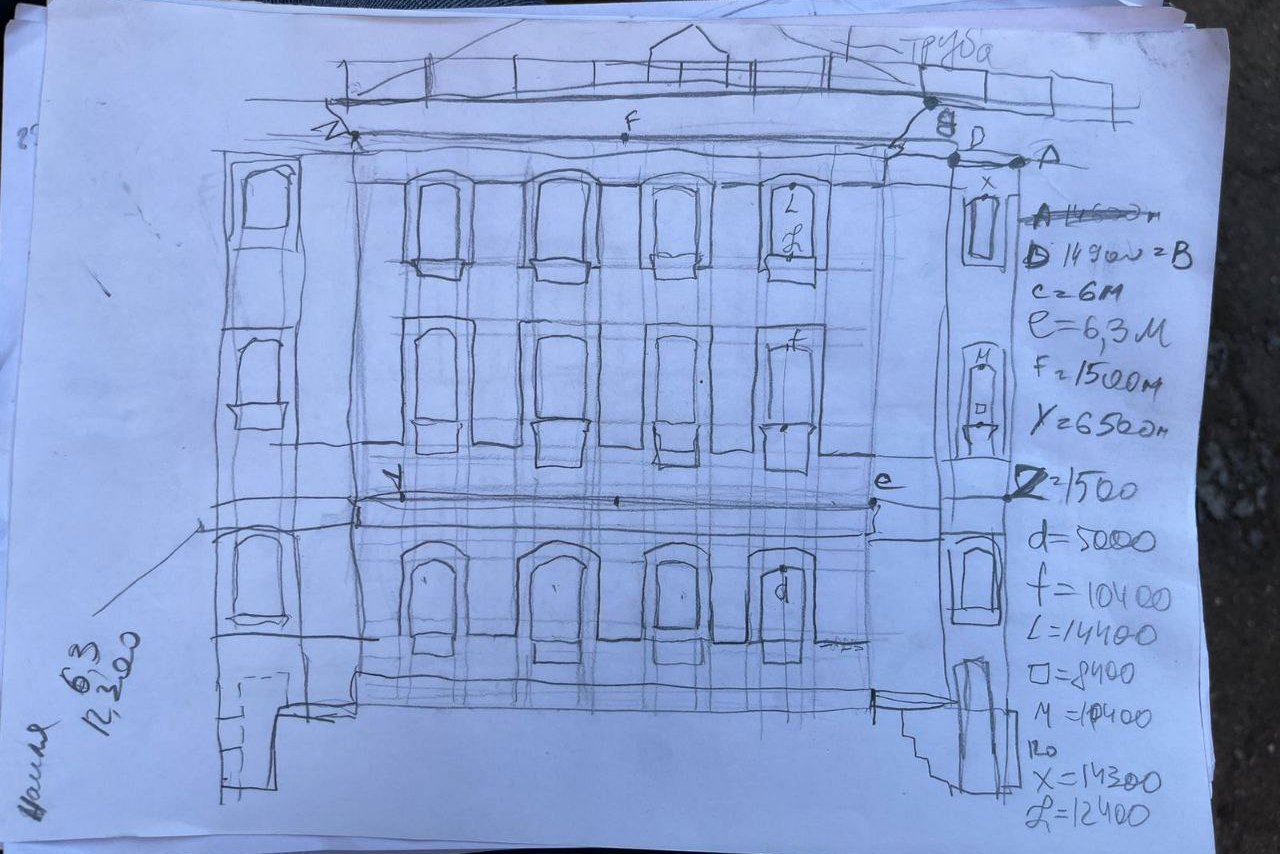LETI Measurable Dimensions

Students of Stieglitz Academy of Art and Design have measured 4 LETI Campus Design sites to map future transformations.
10.07.2023
June 20 – 27, as a part of the LETI Campus Design contest summer program, the university campus hosted students from the Saint Petersburg Stieglitz State Academy of Art and Design (Stieglitz Academy). Young architects and designers were armed with rangefinders, levelers, drawing tools, and rolls of drawing paper.
Spider webs of thread and reference marks appeared in four public areas of LETI. These are the four LETI Campus Design contest sites: The Way to LETI, LETI DNA, LETI Atrium, and LETI Sport. Students of the Stieglitz Academy and their mentors created these temporary engineering installations to take detailed measurements of the zones and make accurate plans for the contest.
"The threads stretched and marks placed are a special scheme using which we will measure angles to make a detailed and accurate plan – the view from above. Next, we will take detailed measurements of all the other vertical surfaces of the yard. Today, we measured facades, cornices, height, and width of window openings," a student of the Stieglitz Academy told us about the process of work at the Atrium space.
Students mastered accurate measurements by combining modern technologies with techniques and tools available for the 19th-century engineers and builders who created campus of the First Electrotechnical.
"By most people artists and designers are seen as abstractly creative individuals, far from technical studies, which is not quite correct, and our summer practice on the LETI projects sites clearly confirms this.
To develop innovative solutions for the transformation of contest sites, young designers and architects must know exact dimensions. Understanding physical parameters of the renovated environment is critical for the successful project. Only scientific and engineering knowledge and skills, such as drafting, design graphics coupled with the basics of descriptive geometry can make an architectural or design project realistic."
This is how sciences can strengthen the artistic concept. And in what way the artistic approach can be useful for engineers, scientists and innovators, LETI students for example?
This you can learn at the International Interdisciplinary Summer School "LETI Metalaboratory" on July 19 – 22.
The school participants will learn what artistic approaches work in the engineering and research, making them unique, and how to create objects of art, which integrate science and technologies. Students will work in the interdisciplinary teams under the guidance of mentors. The result of teamwork will be architectural and design projects as a synthesis of scientific ideas and creative solutions.




